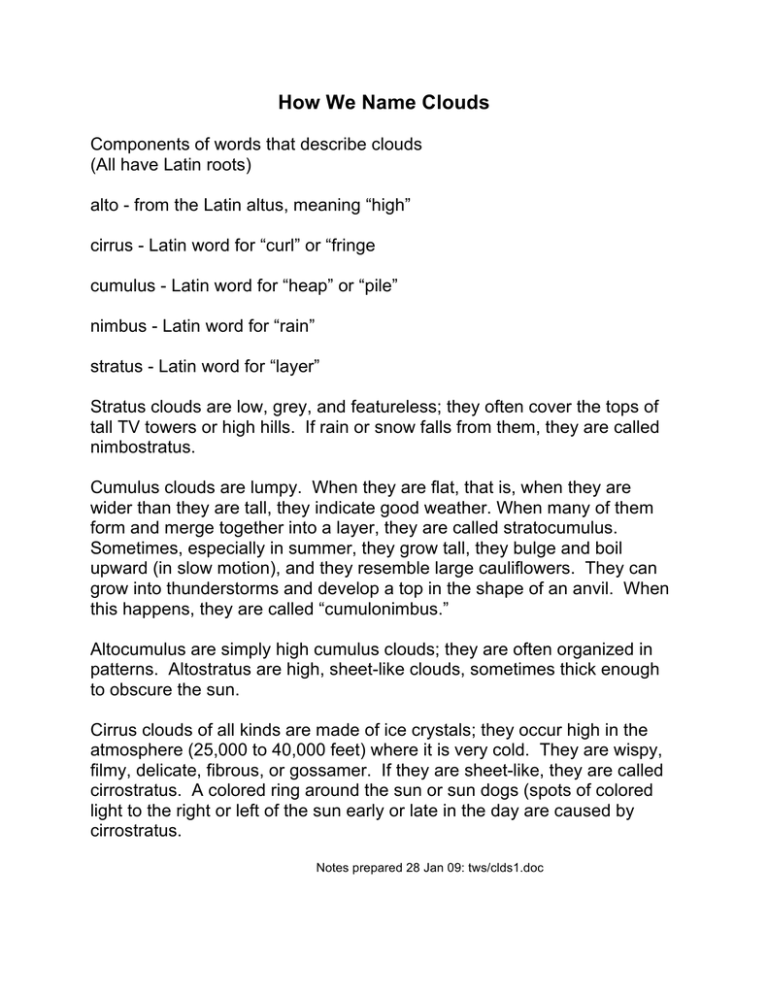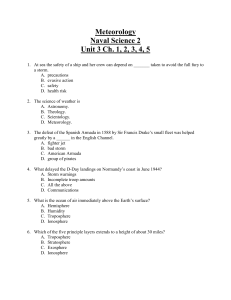How We Name Clouds
advertisement

How We Name Clouds Components of words that describe clouds (All have Latin roots) alto - from the Latin altus, meaning “high” cirrus - Latin word for “curl” or “fringe cumulus - Latin word for “heap” or “pile” nimbus - Latin word for “rain” stratus - Latin word for “layer” Stratus clouds are low, grey, and featureless; they often cover the tops of tall TV towers or high hills. If rain or snow falls from them, they are called nimbostratus. Cumulus clouds are lumpy. When they are flat, that is, when they are wider than they are tall, they indicate good weather. When many of them form and merge together into a layer, they are called stratocumulus. Sometimes, especially in summer, they grow tall, they bulge and boil upward (in slow motion), and they resemble large cauliflowers. They can grow into thunderstorms and develop a top in the shape of an anvil. When this happens, they are called “cumulonimbus.” Altocumulus are simply high cumulus clouds; they are often organized in patterns. Altostratus are high, sheet-like clouds, sometimes thick enough to obscure the sun. Cirrus clouds of all kinds are made of ice crystals; they occur high in the atmosphere (25,000 to 40,000 feet) where it is very cold. They are wispy, filmy, delicate, fibrous, or gossamer. If they are sheet-like, they are called cirrostratus. A colored ring around the sun or sun dogs (spots of colored light to the right or left of the sun early or late in the day are caused by cirrostratus. Notes prepared 28 Jan 09: tws/clds1.doc




